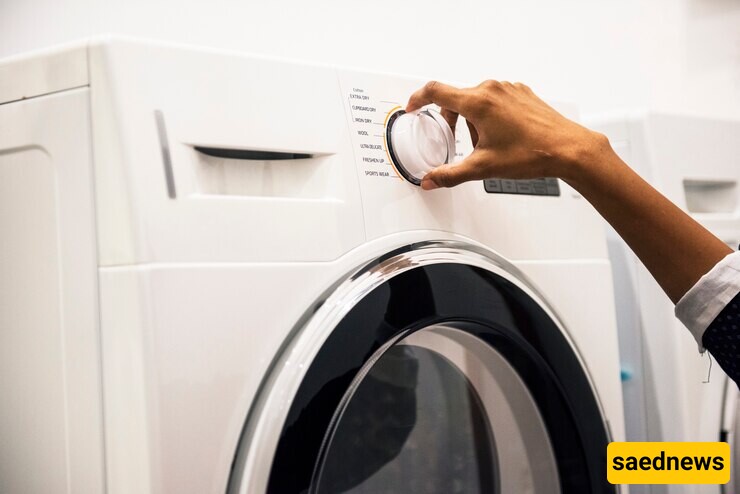SAEDNEWS: If your washing machine makes loud noises during washing or spinning, don't miss this guide from SaedNews.

Washing machine noise during the wash or spin cycle is a common issue that can disturb the peace at home. This noise isn’t always related to whether the machine is new or old—it often requires inspection and minor adjustments. Fortunately, by following a few tips, you can identify and fix the cause of your washing machine noise.

There are several reasons why a washing machine might make a clicking or banging noise, especially during the spin cycle. Common causes include overloading or underloading the drum or the machine not being level on the floor. These issues can often be resolved by properly balancing the load and leveling the machine.
If the noise persists, check the following potential issues:
A common cause of washing machine noise is a faulty drain pump or motor. The drain pump is responsible for removing water from the drum during the wash and spin cycles. If the pump is malfunctioning, it may produce a loud noise.
Steps to Inspect and Fix the Drain Pump:
Remove and clean the drain pump filters. Residue buildup can block the pump and cause noise.
Tighten the hoses and connections to ensure there are no leaks.
Inspect the pump coils. If they are burned out or damaged, replace them.
If the problem persists after these steps, replace the drain pump entirely.
The motor coupling connects the motor to the drain pump. It consists of two plastic components with a rubber coupling in the middle. If the coupling fails, the motor won’t be able to spin the drum effectively, causing vibration and noise.
Common Causes of Motor Coupling Failure:
Worn-Out Coupling: Over time, the coupling can wear out and fail to transfer power efficiently.
Damaged Bolts and Nuts: Loose or damaged bolts can reduce the coupling’s effectiveness.
Loose Bolts: Over time, bolts can loosen, preventing proper power transfer.
Physical Damage: Sudden impacts or heavy loads can damage the coupling.
Solution: Inspect the coupling, tighten or replace any damaged bolts, and, if necessary, replace the coupling entirely.
In belt-driven washing machines, the drum belt connects the motor to the drum pulley and shaft, allowing the drum to spin. Over time, the belt may become worn or loose, leading to noise during high-speed spins.
Signs of a Worn Belt:
A burning rubber smell inside the washing machine.
A squealing or slapping noise during the spin cycle.
Solution: Replace the worn drum belt with a new one.
Some washing machines have three shock absorbers located at the drum corners. These components control the movement of the drum, especially during the spin cycle. In many models, these shock absorbers are made of plastic, which wears out over time.
Signs of Worn Shock Absorbers:
Excessive vibration and movement of the washing machine during the spin cycle.
The drum hits the sides of the washing machine, causing loud noises.
Solution: Replace the worn shock absorbers to stabilize the drum during operation.
An uneven washing machine is one of the most common causes of loud noises during spinning. If the machine isn’t level, the drum will become unbalanced, leading to vibration and loud knocking sounds.
Steps to Level the Washing Machine:
Use a wrench to adjust the four leveling legs under the machine.
Ensure all legs are evenly adjusted so the machine sits flat on the floor.
Place rubber pads under the machine legs for extra stability.
If the noise persists despite checking these common issues, it’s best to consult a professional technician. Regular maintenance and proper usage can also prevent many of these problems, ensuring a longer lifespan for your washing machine.

